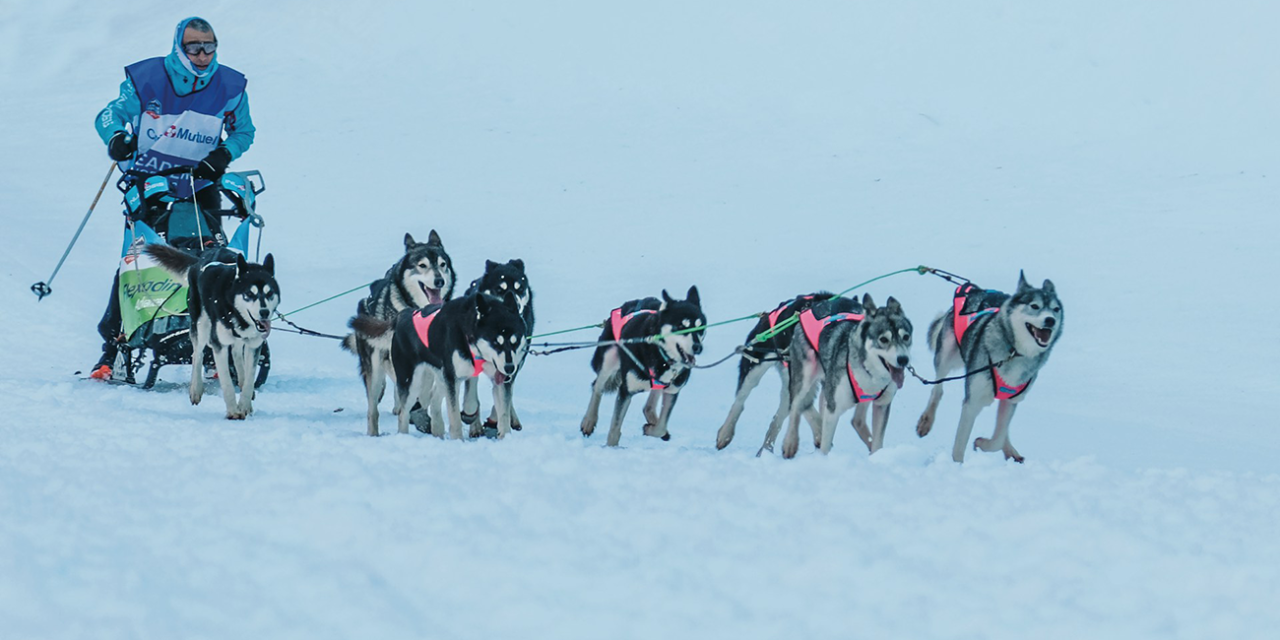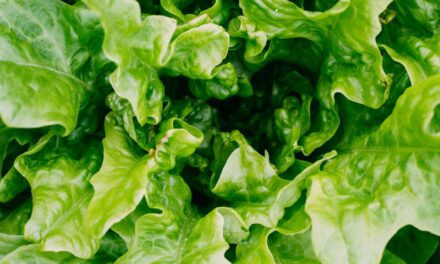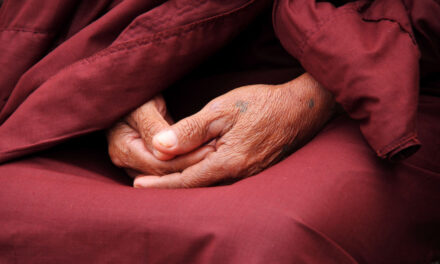Dog sledding is a fascinating and demanding sport, deeply rooted in history and tradition. Understanding the terminology and key figures involved is crucial for anyone interested in this unique activity. This guide breaks down important terms and notable individuals associated with dog sledding.
Table of Contents
Dog Breeds in Dog Sledding
Alaskan Husky
Bred for their high speeds and endurance, the Alaskan Husky is a mix of hound crosses and Siberian Husky.
- These dogs are known for their stamina and ability to perform in harsh conditions.
- Alaskan Huskies are not a pure breed but are selectively bred for their sledding capabilities.
Their combination of speed and endurance makes them ideal for long-distance races like the Iditarod.
Alaskan Malamute
Developed by the Mahlemut tribe of Alaska, the Alaskan Malamute is one of the larger northern breeds.
- Known for their strength and ability to pull heavy loads.
- Malamutes are typically too slow to compete in most dog sled races but are excellent for freight and long-distance hauling.
Despite their slower speed, their power and endurance make them valuable for heavy-duty sledding tasks.
Siberian Husky
Originally developed by the Chukchi people of Siberia, the Siberian Husky is a medium-sized dog.
- Used historically for pulling sledges, guarding families, and herding reindeer.
- Siberian Huskies are known for their endurance and ability to work in extremely cold climates.
Their smaller size compared to Alaskan Malamutes makes them faster, suitable for competitive racing.
Mackenzie River Husky
The Mackenzie River Husky refers to sled dogs developed in northern communities, especially known through Donna Perry’s breeding programs.
- These dogs are not considered a distinct breed but are valued for their sledding capabilities.
- They are known for their strength and endurance in harsh Arctic conditions.
Mackenzie River Huskies are versatile and robust, capable of performing various sledding tasks.
Key Equipment in Dog Sledding
Bungee Neckline
A neckline that has give and flex with the movement of the dog.
- Helps prevent injuries by reducing strain on the dogs’ necks during runs.
- Allows for better control and comfort for the dogs.
The flexibility of the bungee neckline makes it a vital part of modern sledding equipment.
Centerline (Towline)
This is the section of the gangline that runs down the middle of the dogs.
- It connects all the dogs in the team to the sled.
- Must be strong enough to hold the entire team’s pull.
The centerline is crucial for maintaining the structure and direction of the sled team.
Gangline
The gangline refers to the rigging or rope that connects the dogs to the sled or wheeled vehicle.
- Includes the tuglines, towlines, and necklines.
- Some mushers use the term gangline to describe the entire setup, while others refer specifically to the centerline.
A well-maintained gangline is essential for safe and efficient dog sledding.
Harness
A piece of equipment worn on a dog to transfer the energy of pulling from the dog to the item being pulled.
- Made from webbing with fleece or neoprene padding in high-pressure areas.
- Designed to distribute the pulling force evenly across the dog’s body.
Proper harnesses are vital for the comfort and performance of sled dogs.
Key Figures in Dog Sledding
Jeff King
Jeff King is one of the top competitors in long-distance sled dog racing.
- Has won both the Yukon Quest and the Iditarod.
- Known for his innovations in sled dog equipment, such as the tail dragger sled.
Jeff King’s contributions have significantly advanced the sport of dog sledding.
Joe Redington Sr.
Known as the “Father of the Iditarod,” Joe Redington Sr. played a pivotal role in popularizing sled dog racing.
- Co-developed the Iditarod Trail Sled Dog Race with Dorothy Page.
- His efforts have made the Iditarod the most well-known dog sled race today.
Joe Redington Sr.’s legacy continues to inspire mushers worldwide.
Martin Buser
Martin Buser is a four-time Iditarod champion.
- Notable for completing the Iditarod in under nine days in 2002.
- Married to Kathy Chapoton, with two sons, Rohn and Nickolai.
Martin Buser’s achievements have set new standards in dog sled racing.
Rick Swenson
Rick Swenson holds the record for the most Iditarod wins, with five championships.
- Moved to Alaska in 1973 and has been an active musher ever since.
- Continues to be a significant figure in the dog sledding community.
Rick Swenson’s enduring presence in the sport makes him a legendary figure.
Susan Howlet Butcher
Susan Howlet Butcher was the second woman to win the Iditarod and later won it four times.
- Known for her determination and dedication to the sport.
- Famous quote: “I do not know the word ‘quit.’ Either I never did it, or I have abolished it.”
Susan Butcher’s legacy is a testament to perseverance and excellence in dog sledding.
Key Terms in Dog Sledding
Gee and Haw
Commands used to direct the sled team.
- “Gee” means turn right.
- “Haw” means turn left.
These commands are essential for navigating trails.
Hike
The command used to get the team moving.
- Indicates the start of the run or to pick up speed.
- Commonly used by mushers to motivate the dogs.
Effective use of the hike command ensures smooth starts and transitions during a race.
Lead Dog
The dog(s) at the front of the team responsible for following commands and guiding the team.
- Needs to be obedient and responsive.
- Plays a critical role in the success of the team.
Choosing the right lead dog is crucial for effective team management.
Snowhook
A claw-like hook used for securing a dog sled team in the snow.
- Made of aluminum or steel.
- Prevents the sled from moving when the musher needs to stop.
The snowhook is a vital tool for safety and control.
Tugline
The rope that connects the dog’s harness to the towline or centerline.
- Ensures each dog contributes to pulling the sled.
- Must be durable and properly maintained.
Tuglines are essential for distributing the load among the team.
Q&A: Exploring Dog Sledding
Q: What is mushing?
A: Mushing is a general term for dog-powered sports or transportation methods.
This includes activities like carting, pulka, scootering, dog sled racing, weight pulling, skijoring, bikejoring, freighting, and canicross. The word “mush” originates from the French word “marche,” meaning “go.” Although “Mush!” is rarely used today, as some mushers find it too soft to motivate the team, the command “Hike!” is more commonly used now.
Q: How many dogs are in a dog sledding team?
A: The number of dogs in a sledding team varies depending on the musher’s needs and the specific race.
For instance, in the Iditarod, the maximum number of dogs is 16, while other races might limit teams to just one dog. There’s no fixed number required to pull a sled, as long as the dogs are sufficient to handle the load. As a testament to their strength, a single Siberian Husky can pull a rig with a musher on its own.
Q: What is a rig?
A: A rig is a vehicle used for running a dog sled team on snowless ground.
It is usually a three-wheeled homemade contraption made with welded pipes. Rigs are also referred to as chassis or carts. For larger teams, such as those with around 10 dogs, some mushers use an ATV as their rig. Occasionally, a car without an engine is used to give the musher more control, preventing them from being dragged by the powerful team.
Q: How do mushers steer their sled?
A: Mushers steer their sleds by using commands to direct their lead dogs.
Common commands include “Gee!” for right, “Haw!” for left, “Whoa!” for stop, and “Hike!” for go. Advanced commands like “On By!” instruct the team to pass by a split in the trail or another dog sled team. The musher also leans the sled to follow the dogs’ path.
Q: What is a lead dog?
A: Lead dogs are at the front of the team and take commands from the musher.
Behind the lead dogs are the point dogs, which aid in turning the team. Team dogs provide strength, while the wheel dogs, positioned right in front of the sled, handle the sled’s impact and ensure it stays on track. All dogs work together harmoniously to pull the sled.
Q: What holds the team together?
A: The team is connected by a system called the gangline.
The tow line runs the entire length of the gangline, bearing most of the strain. Tug lines connect each dog to the tow line, and necklines attach the dogs’ collars to the tow line, keeping them in line and preventing tangling. Some teams use a fan hitch style, especially in open areas like tundra and sea ice.
Q: What type of dogs are used on a dog sled team?
A: Various breeds are used, including Alaskan Huskies, Siberian Huskies, Alaskan Malamutes, and Samoyeds.
Alaskan Huskies, a mix of breeds like husky, hound, and border collie, are known for their speed. Siberian Huskies are light and suited for long distances, while Alaskan Malamutes excel at pulling heavy loads. The key is the dogs’ love for pulling, not their appearance.
Q: Don’t non-arctic dogs get cold when they dog sled?
A: Dogs without a thick undercoat are given protective gear to stay warm.
While running, dogs generate a lot of heat. Even dogs with less fur stay warm during activity. At checkpoints, dogs may wear coats, and manufacturers make special coverings for their sensitive areas. Booties are used to protect their feet from snow and ice, ensuring the dogs’ comfort and health.
Q: What is the role of the musher during a race?
A: The musher is responsible for guiding the team, managing their well-being, and ensuring the sled follows the correct path.
This involves giving commands, providing care at checkpoints, and making strategic decisions to optimize the team’s performance and safety throughout the race.
Q: How do mushers train their dogs for racing?
A: Training involves conditioning, obedience, and team cohesion exercises.
Mushers gradually increase the dogs’ endurance through regular runs, teach them commands, and ensure they work well together. Training is a continuous process that prepares the dogs for the physical and mental demands of racing.
Q: What kind of equipment is essential for dog sledding?
A: Essential equipment includes the sled, gangline, harnesses, booties, and protective gear for the dogs.
The sled needs to be sturdy and lightweight, while the gangline and harnesses must be durable and fit well. Booties protect the dogs’ feet, and additional gear like coats or blankets may be used in extreme conditions.
Q: How do weather conditions impact dog sledding?
A: Weather conditions significantly affect the safety and performance of the team.
Mushers need to monitor temperatures, snow quality, and potential hazards. Proper preparation and flexible strategies are crucial to adapting to changing weather and ensuring the team’s well-being.
Q: What is the significance of the Iditarod race in the mushing community?
A: The Iditarod is one of the most prestigious and challenging long-distance dog sled races.
It covers approximately 1,000 miles across Alaska, testing the endurance, skill, and resilience of both mushers and dogs. Completing the Iditarod is a significant achievement and a testament to the dedication and expertise of the participants.
Q: How do mushers care for their dogs during long races?
A: During long races, mushers prioritize the health and well-being of their dogs by providing regular breaks, hydration, and nutrition.
At checkpoints, dogs are examined by veterinarians, given rest, and treated for any injuries or discomfort. Mushers also ensure their dogs are well-fed with high-calorie, nutrient-rich food to maintain their energy levels throughout the race.
Q: What is the role of a handler in dog sledding?
A: Handlers assist mushers by helping care for the dogs, preparing equipment, and providing support during training and races.
They play a crucial role in maintaining the health and readiness of the dogs, ensuring that the team is well-prepared and that the musher can focus on steering and strategy during the race.
Q: How do mushers select their lead dogs?
A: Mushers select lead dogs based on their intelligence, temperament, and responsiveness to commands.
Lead dogs need to be focused, confident, and able to make quick decisions. They are typically the most experienced and well-trained dogs on the team, capable of setting the pace and guiding the other dogs through various terrains and conditions.
Q: What types of races are there in dog sledding?
A: Dog sledding races vary in distance and format, including sprint races, mid-distance races, and long-distance races.
Sprint races are short, high-speed events, typically ranging from 4 to 30 miles. Mid-distance races cover around 100 to 300 miles and test both speed and endurance. Long-distance races, such as the Iditarod, span up to 1,000 miles and challenge the stamina and resilience of both mushers and dogs.
Q: How do mushers prepare for extreme weather conditions during races?
A: Mushers prepare for extreme weather by equipping their sleds with essential supplies, such as extra dog booties, blankets, and emergency food and water.
They also train their dogs to handle various weather conditions and ensure they have appropriate gear to stay warm and protected. Mushers themselves wear insulated clothing and carry survival kits to be ready for any situation they might encounter on the trail.
The Legacy of Dog Sledding
Dog sledding is more than just a sport; it’s a testament to the bond between humans and their canine companions.
This ancient mode of transportation has evolved into a modern sport that requires rigorous training, precise equipment, and a deep understanding of the dogs’ needs and capabilities. As mushers and their teams continue to push the boundaries of endurance and speed, they honor the traditions of the past while embracing the innovations of the future. The world of mushing remains a captivating and dynamic aspect of the relationship between humans and dogs, showcasing teamwork, resilience, and the thrill of the race.





